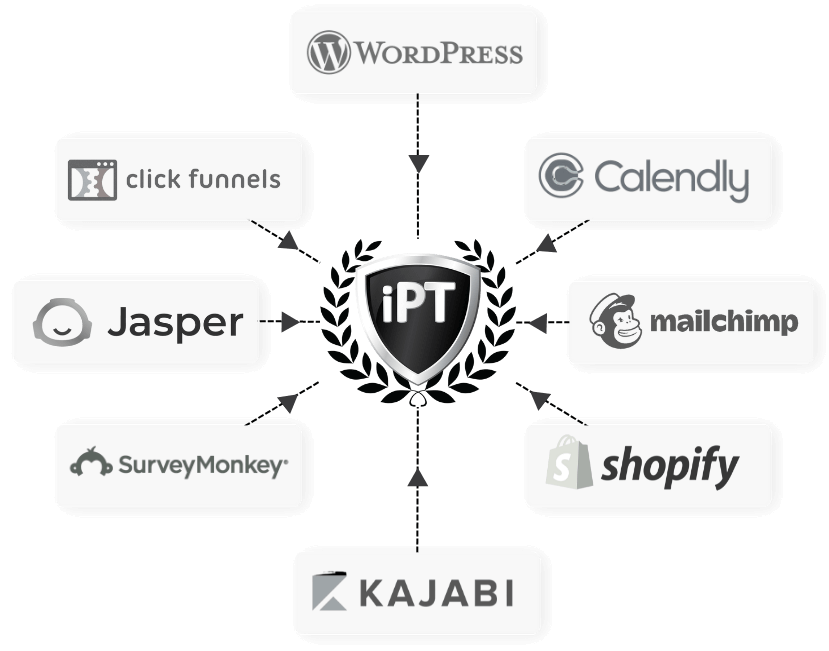How to Track Your Business Numbers |
Learn More About Tracking Your Numbers
What You'll Learn
This lesson will explain what the key elements of financial management are and what exactly are those business numbers every personal trainer should understand and track
Why is This Important?
No matter how good your accountant is, if something goes wrong with the business' finances, it will effect you only. Being in control and learning your business numbers will protect you from unexpected financial problems and decrease the risk of making losses instead of profit.
This lesson will explain what the key elements of financial management are and what exactly are those business numbers every personal trainer should understand and track
Why is This Important?
No matter how good your accountant is, if something goes wrong with the business' finances, it will effect you only. Being in control and learning your business numbers will protect you from unexpected financial problems and decrease the risk of making losses instead of profit.
Personal trainers have a tendency to rely heavily on their accountants when it comes to tracking their business's critical numbers, or sometimes they don't even track at all!
Having a strong relationship with a reliable accountant is pretty essentail for most trainers, but you can never forget that as a business owner, the responsibility for the financial health of your company rests ultimately with you and you alone.
The simple truth is that you don't need a university degree or an in-depth understanding of double-entry accounting to know which numbers are the most critical to the health of your business.
If you're someone who is a bit intimidated by accounting, just stay with us—we wrote this lesson with you in mind.
Having a strong relationship with a reliable accountant is pretty essentail for most trainers, but you can never forget that as a business owner, the responsibility for the financial health of your company rests ultimately with you and you alone.
The simple truth is that you don't need a university degree or an in-depth understanding of double-entry accounting to know which numbers are the most critical to the health of your business.
If you're someone who is a bit intimidated by accounting, just stay with us—we wrote this lesson with you in mind.
The Basics
The basic financial documents that track the flow of money within your company are the Balance Sheet, the Income Statement and the Cashflow Statement. Most critical numbers live on these documents.
Balance Sheet: This is a document that lists your company's assets and liabilities, among other numbers, from the time you started your business. Reviewing your balance sheet gives you a quick handle on the financial strength and capabilities of your business.
Income Statement: Also known as the profit and loss statement, or P&L, or statement of operations, this document lists your company's income (revenues or sales), minus your company's expenses, and it shows you the profit or loss over a specific period of time.
Cash Flow Statement: A cash flow statement helps you stay on top of how much money came and went through the business for any period of time. This document is critical because it helps you understand why, even if your company appears to be turning a profit, you don't have much money in the bank.
Balance Sheet: This is a document that lists your company's assets and liabilities, among other numbers, from the time you started your business. Reviewing your balance sheet gives you a quick handle on the financial strength and capabilities of your business.
Income Statement: Also known as the profit and loss statement, or P&L, or statement of operations, this document lists your company's income (revenues or sales), minus your company's expenses, and it shows you the profit or loss over a specific period of time.
Cash Flow Statement: A cash flow statement helps you stay on top of how much money came and went through the business for any period of time. This document is critical because it helps you understand why, even if your company appears to be turning a profit, you don't have much money in the bank.
Key Profitability Terms
The term profits should be relatively self-explanatory. The rub is that there are several terms that represent the profitability of your business and keeping them straight can be confusing. Here's a primer on understanding critical profit numbers:
Gross Margin: Also called gross profit. This is how much money you have left after you have subtracted the direct costs from the selling price of your product or service:
Income - direct costs = gross margin.
The higher your margin the better, because you need to have enough left over to pay your indirect costs or overhead (things like salaries, rent, advertising, telephone, and utilities) and still make money. If you don't, then you are likely not charging enough for your products or services.
Net Income: Also commonly referred to as net profit, net earnings, current earnings or the bottom line.
Revenue - expenses = net income.
This number is critical in that it reveals how much money is left after accounting for business operations. If the number is negative, well, then you're company is not profitable and has in effect produced a loss.
Gross Margin: Also called gross profit. This is how much money you have left after you have subtracted the direct costs from the selling price of your product or service:
Income - direct costs = gross margin.
The higher your margin the better, because you need to have enough left over to pay your indirect costs or overhead (things like salaries, rent, advertising, telephone, and utilities) and still make money. If you don't, then you are likely not charging enough for your products or services.
Net Income: Also commonly referred to as net profit, net earnings, current earnings or the bottom line.
Revenue - expenses = net income.
This number is critical in that it reveals how much money is left after accounting for business operations. If the number is negative, well, then you're company is not profitable and has in effect produced a loss.
Key Ratios
Now that you have a handle on these critical numbers, and how to calculate them, you can then begin to use ratios to understand the health of your business.
Ratios help you to understand how these numbers work together. For example, a company's current ratio tracks the relationship between assets and liabilities. Following ratios over time will help you to understand the momentum in your business.
To keep tabs on these critical numbers and ratios, create a spreadsheet that draws five or six key numbers from your financial statements on a weekly basis, and helps you monitor the health of your company:
Sales/Revenues: Everyone tracks sales. The mistake most business owners make, however, is that they only compare contemporary numbers with those of past time periods. Comparing figures to what you want them to be in the future is a better way to go. In other words, your objective should not be to see how far you've come in the past year—it should be to track your progress against where you hope to be in the coming year.
Net Profit: Profits fix just about everything. As long as you are charging more than it costs for stuff, you can ensure that you'll continue to grow your company soundly. If you don't have profits, then you're aboard a sinking boat.
Debt-to-Equity: If your business has debt, it belongs on your quick check sheet. The point is to know what your ratio should be and whether you want to establish a budget to begin paring down your debt level.
Ratios help you to understand how these numbers work together. For example, a company's current ratio tracks the relationship between assets and liabilities. Following ratios over time will help you to understand the momentum in your business.
To keep tabs on these critical numbers and ratios, create a spreadsheet that draws five or six key numbers from your financial statements on a weekly basis, and helps you monitor the health of your company:
Sales/Revenues: Everyone tracks sales. The mistake most business owners make, however, is that they only compare contemporary numbers with those of past time periods. Comparing figures to what you want them to be in the future is a better way to go. In other words, your objective should not be to see how far you've come in the past year—it should be to track your progress against where you hope to be in the coming year.
Net Profit: Profits fix just about everything. As long as you are charging more than it costs for stuff, you can ensure that you'll continue to grow your company soundly. If you don't have profits, then you're aboard a sinking boat.
Debt-to-Equity: If your business has debt, it belongs on your quick check sheet. The point is to know what your ratio should be and whether you want to establish a budget to begin paring down your debt level.





